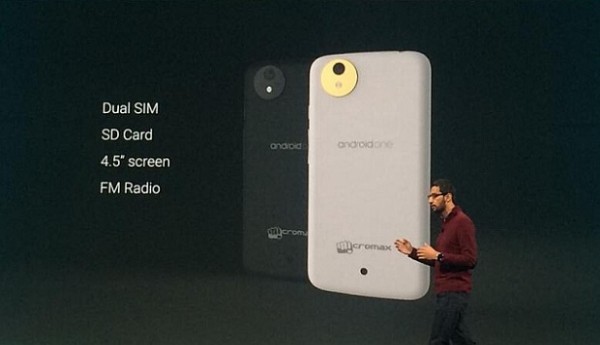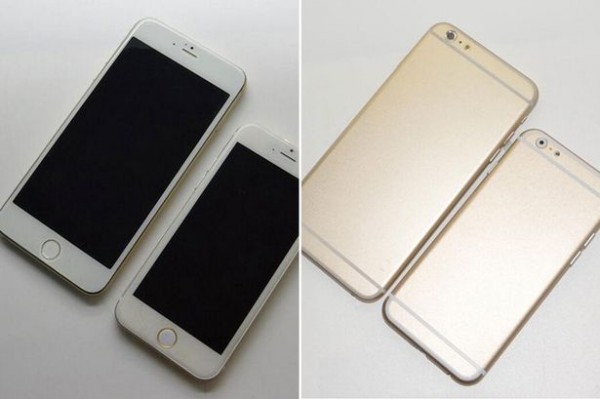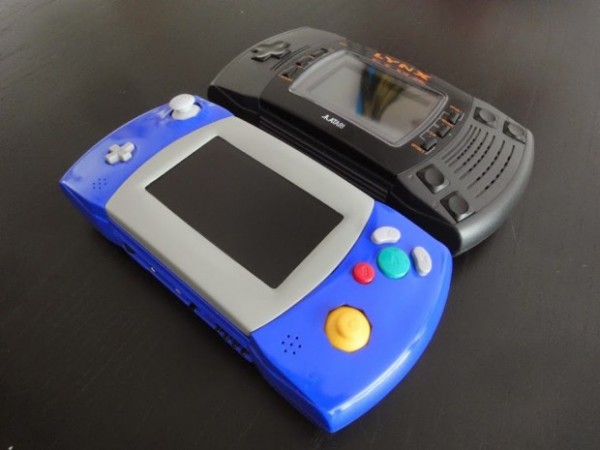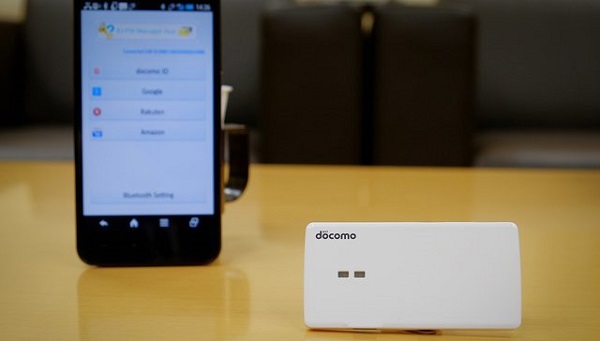Walyou |  |
- A Compilation of the Best Mario Kart 8 Death Stares
- How to get Android L’s performance boost on KitKat
- Tell Me Dave Robot Learns Through Conversations with Humans
- Google Android One Program to Set a Standard for Sub-$100 Smartphones
- iPhone 6 comes in 2 sizes, and that’s a fantastic idea
- GameCube Portable: I don’t think I still care about the 3DS
- Will This Docomo Sim Card Wearable Change How We Use Phones?
| A Compilation of the Best Mario Kart 8 Death Stares Posted: 26 Jun 2014 06:00 AM PDT  A YouTube member brings together the best captures of the Mario Kart 8 death stares.
Who knew in 2014 that the words "Nintendo" and "Internet meme" would exist in the same sentence? But as much as they were being laughed at a few years back for treating the Internet with the same baffled, ignorance that old people have when being confronted with all things Internet-related, the company has surprisingly grasped the medium (i.e. their Nintendo Directs) and used it to their full marketing advantage as of late. It's that quick understanding of the Internet age that is partly to thanks for the now famed "Mario Kart 8 Death Stare", in which a highlight video of a race that first appeared on YouTube catches Luigi fiercely staring down one of his kart-racing rivals with the ire of a thousand suns after bumping them off course with a green-turtle shell. The clip only lasts less than 30 seconds, but it's possibly the funniest thing I've seen all year. And the collective Internet agrees. Not only that, but in its wake a great bounty of similar videos, featuring other Mario Kart 8 characters, have been created and shared. Below you can watch a montage culled from around the web (via YouTube user Koomaxxx) that presents a “best of” of the Mario Kart 8 death stare and all it’s hilarity. Be social! Follow Walyou on Facebook and Twitter, and read more related stories at https://www.facebook.com/Walyou and https://twitter.com/walyou. |
| How to get Android L’s performance boost on KitKat Posted: 26 Jun 2014 05:00 AM PDT  The new version of Android, codenamed Android L, was announced very recently. Yet, it turns out some of the improvements it offers can be enjoyed right now on some phones. Google announced their new OS in their android line at their I/O developer conference in San Francisco, dubbed Android L. The latest version has a new notification system, user interface, better unlock features, and battery-saving mode, above other goodies and easter eggs. Yet, their most impressive doing is the fact that they’ll double app performance (yes, double!) by using the new ART runtime. Yet, ART runtime can be run is some devices already running KitKat. If your device is running Kitkat (Nexus 5, HTC One M8, Samsung Galaxy S5, Moto X, and so on), there’s just one step you got to take to enable ART runtime, and it doesn’t involve any type of hacking, jail-breaking, or anything: just go to the settings menu, pick “About Phone”, and click on build number seven times. This will enable your device’s Developer options, which will give you access to more advanced settings. Then, from the settings menu, select “Developer options”, and pick “Select runtime”. Then, just change Dalvik to ART and reboot. Your device will proceed to update apps for this new runtime, but once it’s done, you’ll notice the boost right away. Keep in mind, though, some apps might be not compatible as of now, and if you run across one such issue with an app you really enjoy, it might be a good idea to switch back and wait for the official update. We hope you enjoy it! Source: CNET |
| Tell Me Dave Robot Learns Through Conversations with Humans Posted: 25 Jun 2014 01:58 PM PDT  Most robots come with predefined interactions with humans, so seeing one who has the ability of learning as people converse with it is really something else. Instead of programming robots to react in a certain way, what if we could explain them what to do in simple steps, so that sets of instructions are added verbally. That could definitely cut down the lines of code written by roboticists. Researchers at Cornell University designed as part of the “Tell Me Dave” project a robot that learns new instructions while talking (or rather being talked to) by humans. Tell Me Dave is based on Willow Garage’s PR2 robot, which could tell what people are doing by analyzing their movement patterns. PR2 was also able to identify objects and situations, fact that made his tasks a whole lot easier. Tell Me Dave employs a 3D camera to associate objects with the activities they’re used for. In particular, Tell Me Dave could become one of the first robotic chefs in the world. What I mean by that is that it could make a lot of associations in the kitchen, starting with pans, faucets and stoves. For example, Tell Me Dave knows that pans have a concave surface that holds water poured from a faucet. Furthermore, that water could be heated by placing the pan on the stove. Assuming that the robot already knows these when starting a conversation with a human, when asked to boil some noodles, he will know exactly what to do.
The important aspect in this context is that the robot is able to memorize previous associations, in order to know how to further expand them in the future. Ashutosh Saxena, assistant professor of computer science at Cornell University, achieved this by teaching robots to understand instructions given in naturally-spoken language. The robots developed by Saxena and his fellow researchers are able to adapt to the surrounding environment. Saxena even pointed out that “With crowd-sourcing at such a scale, robots will learn at a much faster rate.” The ones who happen to be in Berkeley, California between July 12-16, should definitely attend the Robotics: Science and Systems conference, where Saxena and graduate students Dipendra K. Misra and Jaeyong Sung will showcase the Tell Me Dave robot. Be social! Follow Walyou on Facebook and Twitter, and read more related stories about the Japanese comedian robot that’s funnier than some humans, and the Clearpath Robotics TwitBot that expects your tweets to move. |
| Google Android One Program to Set a Standard for Sub-$100 Smartphones Posted: 25 Jun 2014 01:31 PM PDT  As if the recent price cuts of Android smartphones weren’t enough, the search giant intends to make such mobile devices even more affordable. The Android One program marks the launch of qualitative Android phones with a price tag of under $100. In comparison to the latest flagships, smartphones from China and India are already quite affordable, even though the build quality leaves a bit to be desired sometimes. Google means to make no compromises in terms of quality, while still offering Android handsets at decent prices. Sundar Pichai, senior vice president of Android, Chrome and Apps, announced during a keynote at the Google I/O conference that the Android One program will include a reference design on which device makers will build their devices. Indian mobile device makers Micromax, Karbonn, and Spice are the first three companies to join the Android One program. Pichai even showcased a Micromax Android One smartphone while on the stage. The dual-SIM handset features a 4.5″ display (more than what Samsung Galaxy S2 had 3 years ago), FM radio and a microSD slot for extending the storage capacity. The amount of internal memory is currently unknown. Google’s ultimate goal is to provide an Android smartphone to the remaining 5 billion that don’t currently own one. This is a bit of an impossible thing, as most people from emerging countries still won’t be able to afford getting an Android phone, regardless of how cheap it gets. Dreaming is not wrong though, and setting such a high goal will encourage the search giant to strive for progress continuously. Pichai admitted that he had been using a Micromax Android One smartphone for a while now, and even expressed his excitement about the device, despite being used to high-end devices. The whole idea of having such decent specs for under $100 would’ve seemed unreal a few years ago, but the advancements in technology (I’m referring here both to materials and production procedures) could turn this into a reality really soon. Hopefully, more and more device makers will join this program, and will realize that selling affordable devices in large quantities is a lot better both for themselves and for their customers than selling very expensive smartphones to a limited few. Google is definitely a pioneer, but it won’t be able to do it without the support of other manufacturers. Be social! Follow Walyou on Facebook and Twitter, and read more related stories about the SoCs for affordable Android tablets that Intel and Rockchip are working on, and the $100 HP 7 Plus Android tablet. |
| iPhone 6 comes in 2 sizes, and that’s a fantastic idea Posted: 25 Jun 2014 12:10 PM PDT  Phone creators underestimate how important size is when it comes to picking a new device, but Apple is beggining to realize with their iPhone 6. Apple plans to begin mass production of the iPhone 6, but in two versions that would be released simultaneously. These versions would differ on their size, having one the standard 4.7inch screen we’ve known for years, and the rumored larger 5.5inch the other. The rumor mill seemed to indicate they would release a few weeks apart, but a source from Bloomberg claims that both models will be out on the same day. The one catch, though, is that being that the creation of the 5.5 version is more complex, stock may vary, and this second version could be significantly harder to get. The production is set to begin in July, which has made several experts predict a launch date for September 19th, Source: Daily Record Be social! Follow Walyou on Facebook and Twitter, and read more related stories at iPhone 6 Rumoured to Have 5.5 Inch Screen, Launch with iWatch and iPhone-Friendly WTFJeans Are Water Repellant and Radiation-Proof. |
| GameCube Portable: I don’t think I still care about the 3DS Posted: 25 Jun 2014 07:00 AM PDT  What if GameCube consoles suddenly became portable, and you could play Zelda: Windwaker, Resident Evil 4 or Metroid Prime on the go? Well, you don’t have to dream anymore. The Atari Lynx was one of the first serious competitors to Nintendo’s total domination on the portable market. Yet, those days are long gone, and thanks to a modder who goes by the name of Akira, both Atari and the big N reunite under the same case: this is an Atari Lynx housing a functional GameCube portable mod. Akira calls this baby the GC Lynx. He equipped it with a 4.3? 480×272 widescreen display, and applied a custom paint-job with the original GameCube’s colors. Furthermore, he rebuilt the entire control scheme using parts from a Wii and a GameCube controller, so it responds just like the real thing. The battery feeds the console for up to three hours (that’s about half of what a 3DS lasts), but can be used while it charges. Also, the console was modded to run the games from an SD card instead of optical media (something the PSP should have done from the start). You can see it functioning in the video below these lines. Source: Technabob Be social! Follow Walyou on Facebook and Twitter, and read more related stories at This is what a PS1-themed DualShock 4 controller would look like and The Greatest N64 Mod Yet Makes It Portable And Beautiful. |
| Will This Docomo Sim Card Wearable Change How We Use Phones? Posted: 25 Jun 2014 05:00 AM PDT  Japanese phone network Docomo have announced a new wearable that could potentially change the way that we use our phones, tablets and sim cards.
When you've owned a two or three mobile devices over a few years, you've probably come to terms with the sim card swap. If you have a contract that you quite like (with a massive great data offering, plenty of SMS messages and more minutes than you could shake an alarm clock at) for a relatively decent price, you want to take that contract with you, in the future, even when you get a new device. And you upgrade and get your shiny new phone with its far faster processor and upgraded visuals or the tablet that you've always wanted to use for professional reasons rather than playing Angry Birds on a bigger screen but what happens to the device you left behind? And what do you do when you've got plenty of devices that could make great use of your SIM card but you only have one SIM card to your plan? Well for that, Docomo's new wearable 'Portable SIM' could solve that problem. The main feature of the device is that the Portable SIM would use one SIM and a simple wave of your hand to wireless log into your devices via Bluetooth and NFC technology. Effectively being a standalone authentication device (or a key that unlocks all) there's hope that Docomo's wearable device would allow you to log into phone networks and even transfer information over them. From phone numbers to log-in details, the Portable SIM could make it easier to make a phone call or a text on someone else's phone when your own mobile is out of use. As Japan's largest phone network, Docomo certainly have the chops to pull it off and you'd certainly want them to as well. One of these reasons is that not only could it potentially allow for multiple devices wireless connected to one SIM, it would even work across Android and iOS so if you've got a pricey iPhone and a cheaper companion Android tablet, you'd be able to transfer info between the two like the devices were created by the same company. Currently, the prototype is a little large (although they're looking to shrink it down to a wearable size) and there are reportedly even plans to allow the Portable SIM to connect to TVs and car systems so while that's very ambitious, it sounds interesting and we'll keep you posted once we know more. Source: Docomo Be social! Follow Walyou on Facebook and Twitter, and read more related stories, Now Take a Phone Book Backup on Sim Card Notebook!, Credit Card-Sized Micro-Phone Was Made to Fit in Your Wallet |
| You are subscribed to email updates from Walyou To stop receiving these emails, you may unsubscribe now. | Email delivery powered by Google |
| Google Inc., 20 West Kinzie, Chicago IL USA 60610 | |